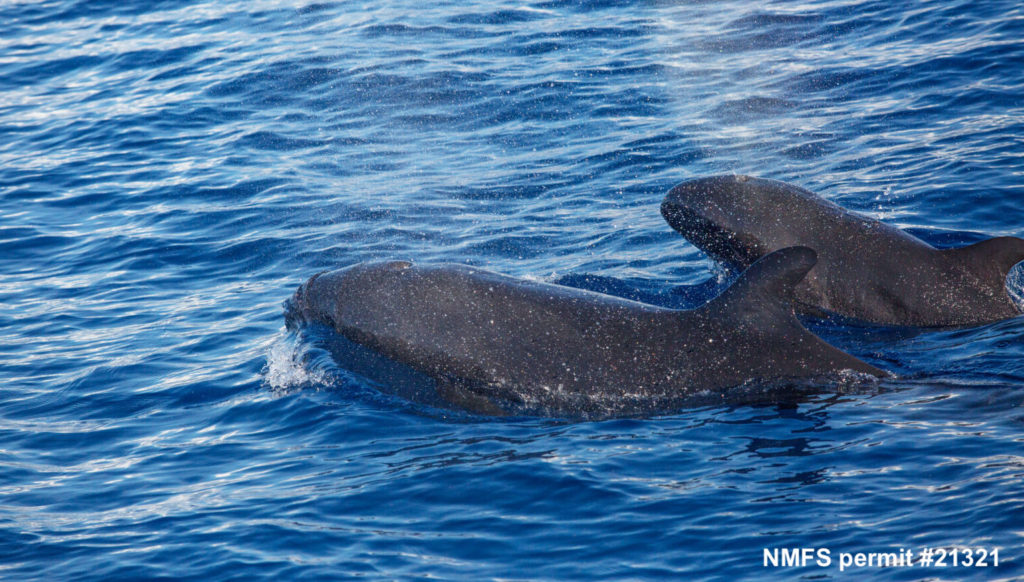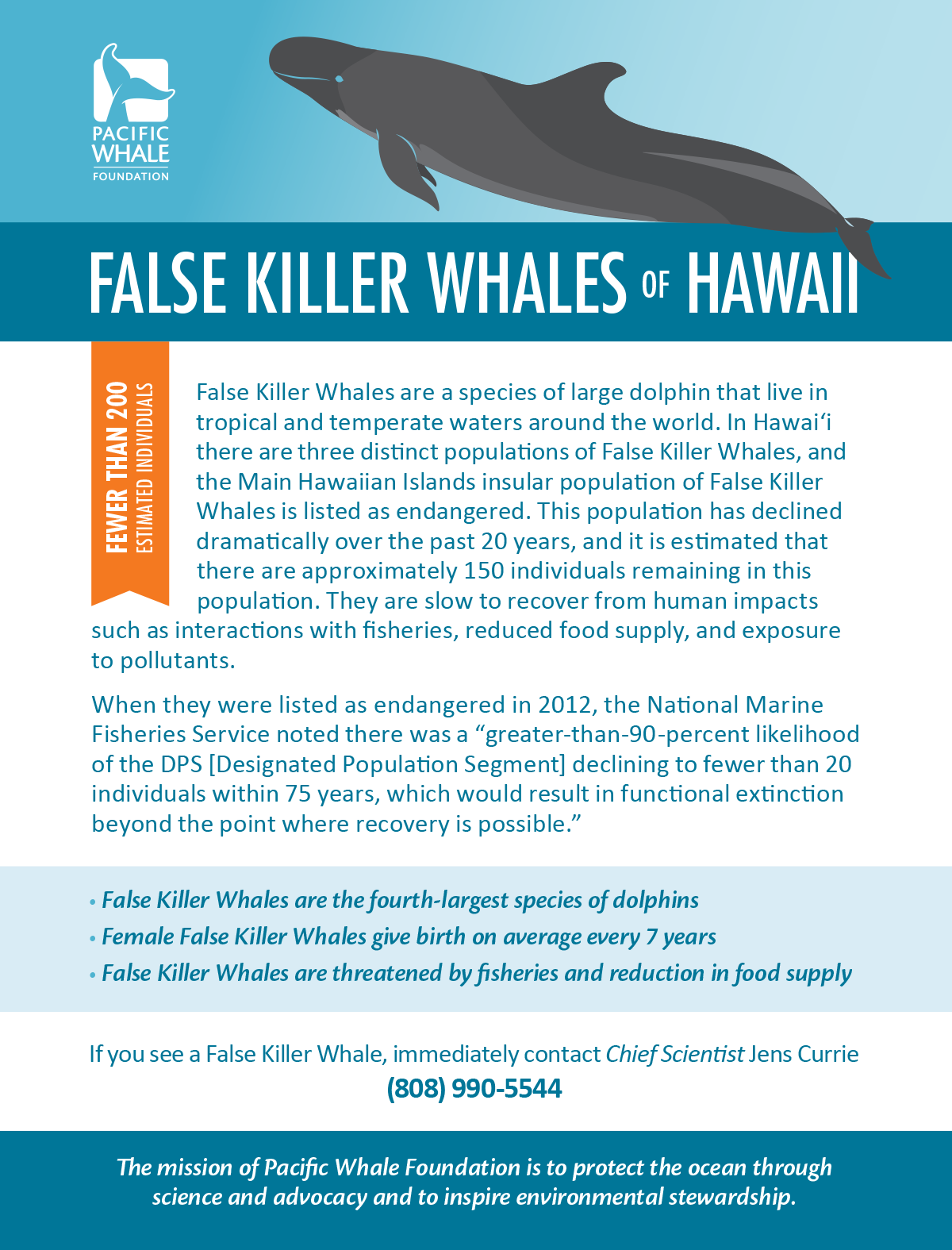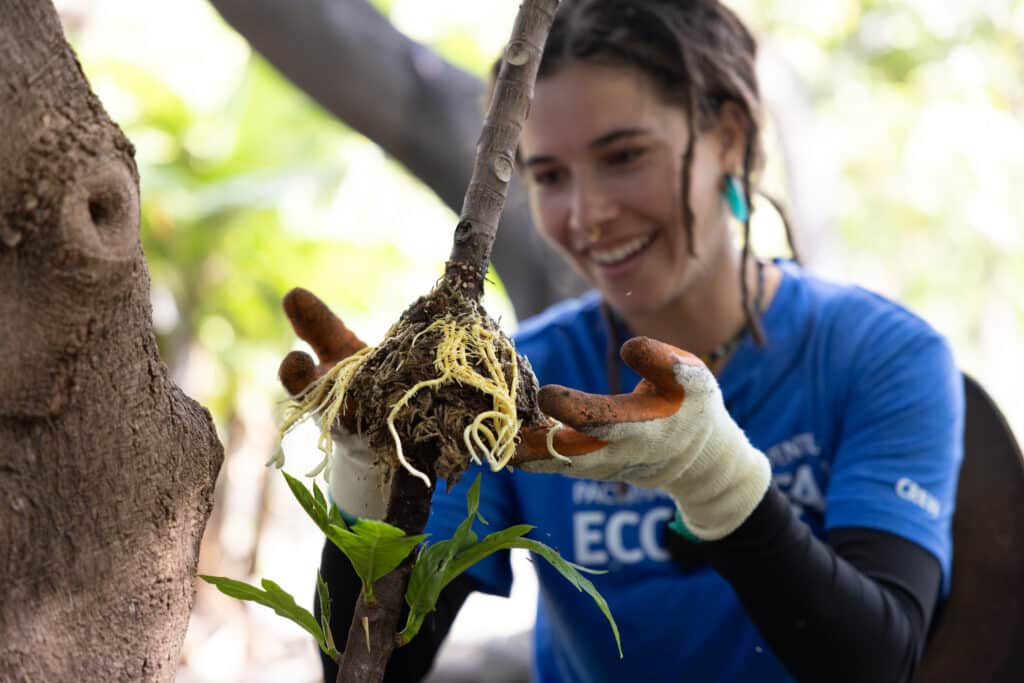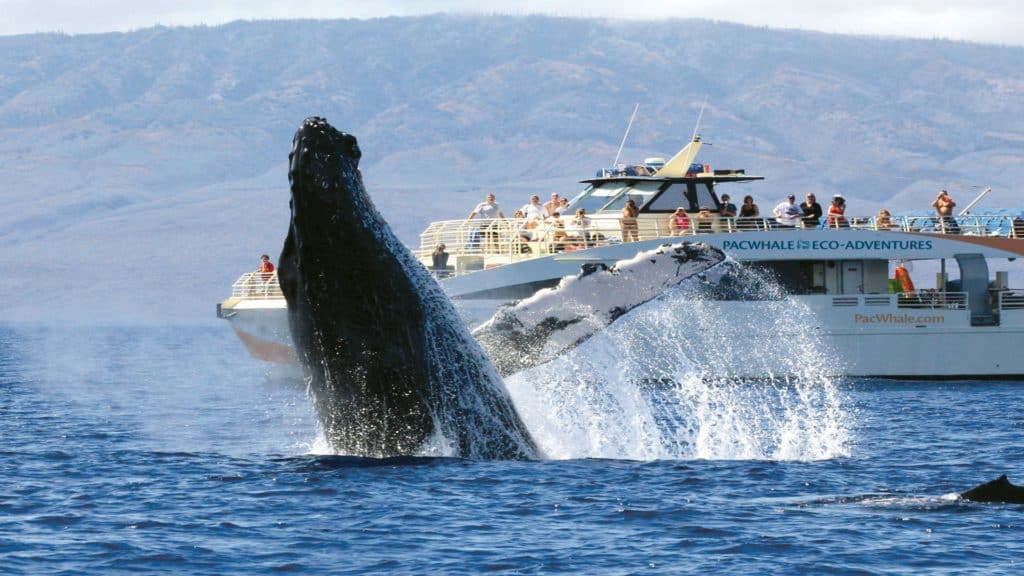Imagine that you’re out enjoying the waters of Maui Nui. From the bow of the boat, you spy a dark shape in the distance. As you draw closer, the impressive black sea creature comes into clear view, eliciting a shiver of adrenalin and awe.
You have, in fact, observed something exciting and rare. False killer whales (Pseudorca crassidens), a large species of dolphin sometimes referred to as “blackfish.” First identified from fossils, false killer whales were so named because their teeth and skulls are strikingly similar to that of killer whales.

It has been twenty years since Pacific Whale Foundation began conducting research on false killer whales in Maui Nui, with the first photographed individual added to our catalog in 1998. Since that time, our research, in conjunction with other studies, has found that sighting rates of false killer whales around the Main Hawaii Islands (MHI) have significantly declined over the past two decades. In 2012, the MHI population of false killer whales was listed as “endangered” under the Endangered Species Act with an estimated 150-200 individuals remaining in the population.

From 2013-2017 PWF’s research team conducted a multi-species survey using a technique called distance sampling in order to estimate how many dolphins were present in this area. During these surveys, we had only 10 false killer whale encounters over the course of 5 years. With such a low encounter rate, we were not able to collect the amount of data needed to answer scientific questions about this population. Given their endangered designation and the imminent need to better understand this population and its trends, PWF implemented a new study in the summer of 2018, focusing on using drones to measure the body condition and size of each individual false killer whale and use this to predict their health and pregnancy status. To accomplish this goal, we reached out to the on-water community in Maui Nui and launched a False Killer Whale Rapid Response Program. We encourage ocean users to report their false killer whale sightings to our team so that we can launch our dedicated research vessel anytime false killer whales are within Maui Nui waters, enabling us to collect much-needed scientific data.
The goal of this study is to provide scientific data to management agencies and other researchers to aid in the recovery of the species and inform conservation strategies. To accomplish this, we have 3 main objectives:
- Continue long-term, photo-ID data collection to monitor the life history traits, movement, and distribution patterns of the species.
- Use photo-identification to provide updated abundance estimates for management purposes.
- Use unmanned aerial systems (UAS), photogrammetry, and underwater footage to assess growth rates, detect pregnancy, examine behavior, and assess overall health status.
Since we began the new study design in May 2018, our team has had 15 successful encounters with false killer whales over the last 3 years (including a gap in 2020 when we could not conduct any responses). Over the course of these encounters, we photographed 31 unique individuals that our researchers have never seen before and added images of their dorsal fins to our existing photo-identification catalog. Every time we see and collect data on this endangered species is memorable for many different reasons, but some encounters stand out above the rest. Some of the most exciting encounters with false killer whales is when we observe them hunting and eating their prey. On three different occasions, our researchers collected above and underwater footage as members of the pod performed their ritualistic behavior of passing their prey items to each individual to hold in their mouths before sharing it amongst the group. The data we collect during these instances is also really important for prey species identification, to learn more about their food preferences in order to inform responsible management of those fish species.
During 7 of the encounters, we were able to launch our UAS (drone) for a total of 33 flights and collected aerial photos and videos. We are not able to launch the UAS during every encounter because some days the weather is too windy or the sea too rough and is unsafe for us to fly a drone. Also, the decision to launch or not highly depends on the behavior of the pod. When animals are very spread out or traveling at very fast swim speeds, it is very challenging to collect the quality of data we need for analysis.
False Killer Whales: Reflecting on Their Past and Planning for Their Future from Pacific Whale Foundation on Vimeo.
The excitement of researching false killer whales does not stop when our vessel arrives back at the dock. Back in the office, we spend time after each encounter processing the various streams of data collected in the field. After identifying and matching individuals by the nicks and notches in their dorsal fins, we have discovered that over the past couple of years we have had multiple sightings of the same mom-calf pairs! This has allowed us to collect repeat photogrammetry and aerial measurements that will enable us to monitor growth rates and changes in body condition over time. It has certainly been a highly successful and exciting past 3 years studying this incredible population!
The increase in the number of sightings and amount of data we have been able to collect and process is largely due to the partnerships we have formed throughout the islands. The community of ocean users that have been our eyes and ears out on the water and have called in sightings of false killer whales has made our rapid response program a huge success. Our partnership with Cascadia Research Collective for sharing photo-identification data has resulted in a broader understanding of the social structure and distribution patterns of the species throughout the other MHI. In addition PWF has teamed up with the Marine Mammal Research Program at the University of Hawaii at Manoa, to analyze UAS data and assess individual body condition and how this relates to population-level health status.
We want to extend a huge mahalo to our partners and all of PWF’s supporters for contributing to our critical research on Hawaii’s endangered false killer whales. This population faces numerous natural and man-made threats that are impacting their ability to recover. Every piece of information we can learn about them will assist in collaborative efforts to effectively protect them and lead to their recovery.
Stay up to date on all of our work at Pacific Whale Foundation and follow us on Facebook, Instagram, and Twitter.

